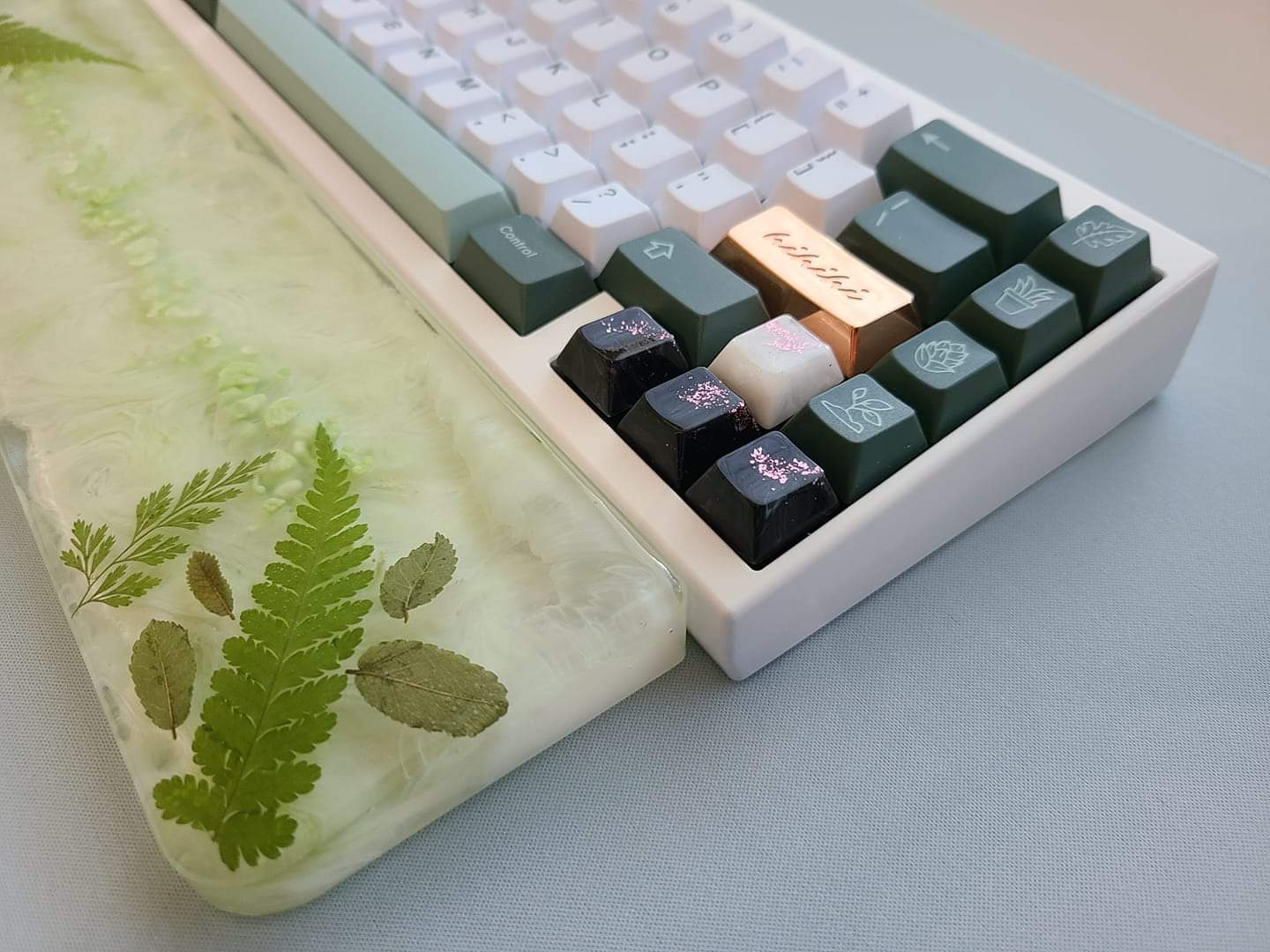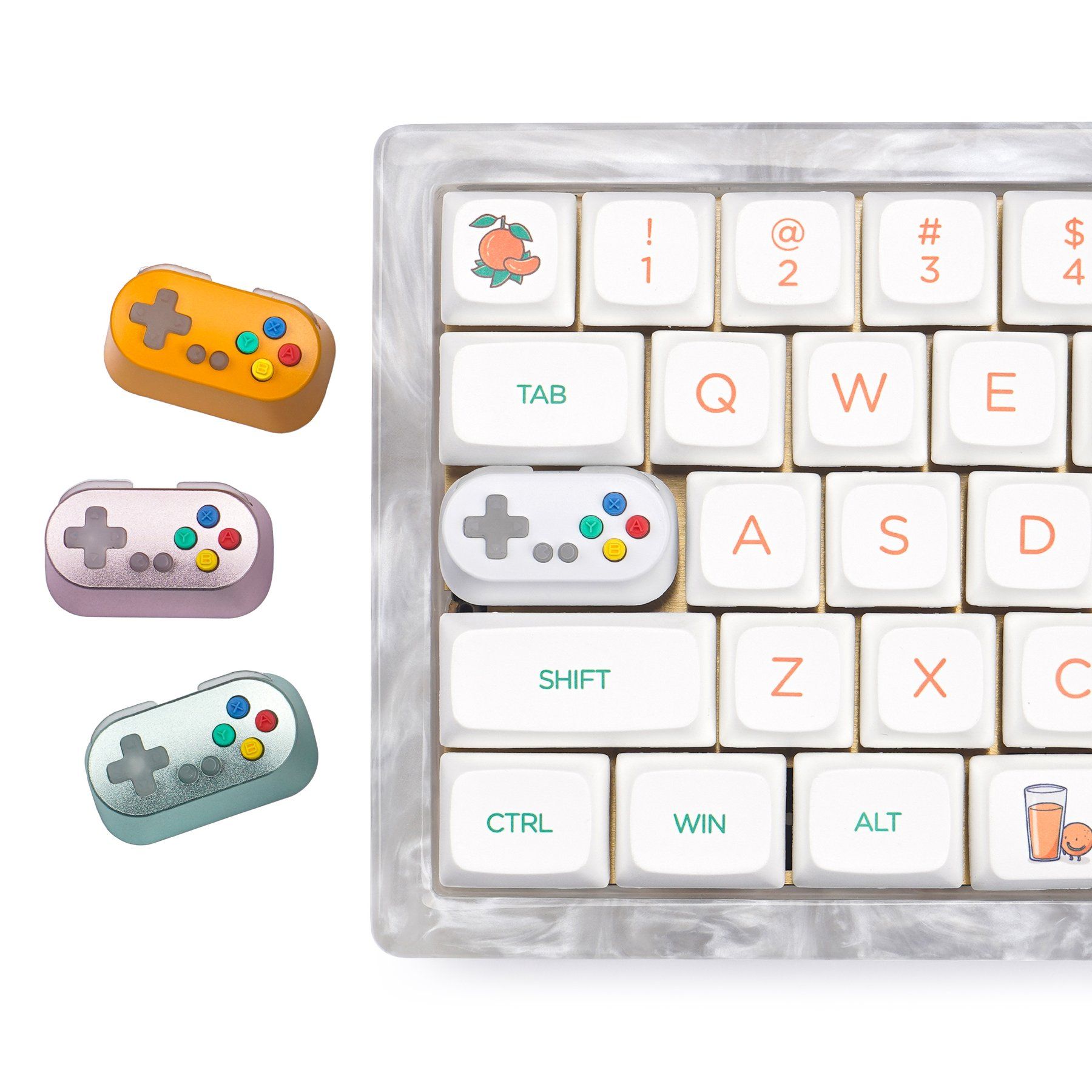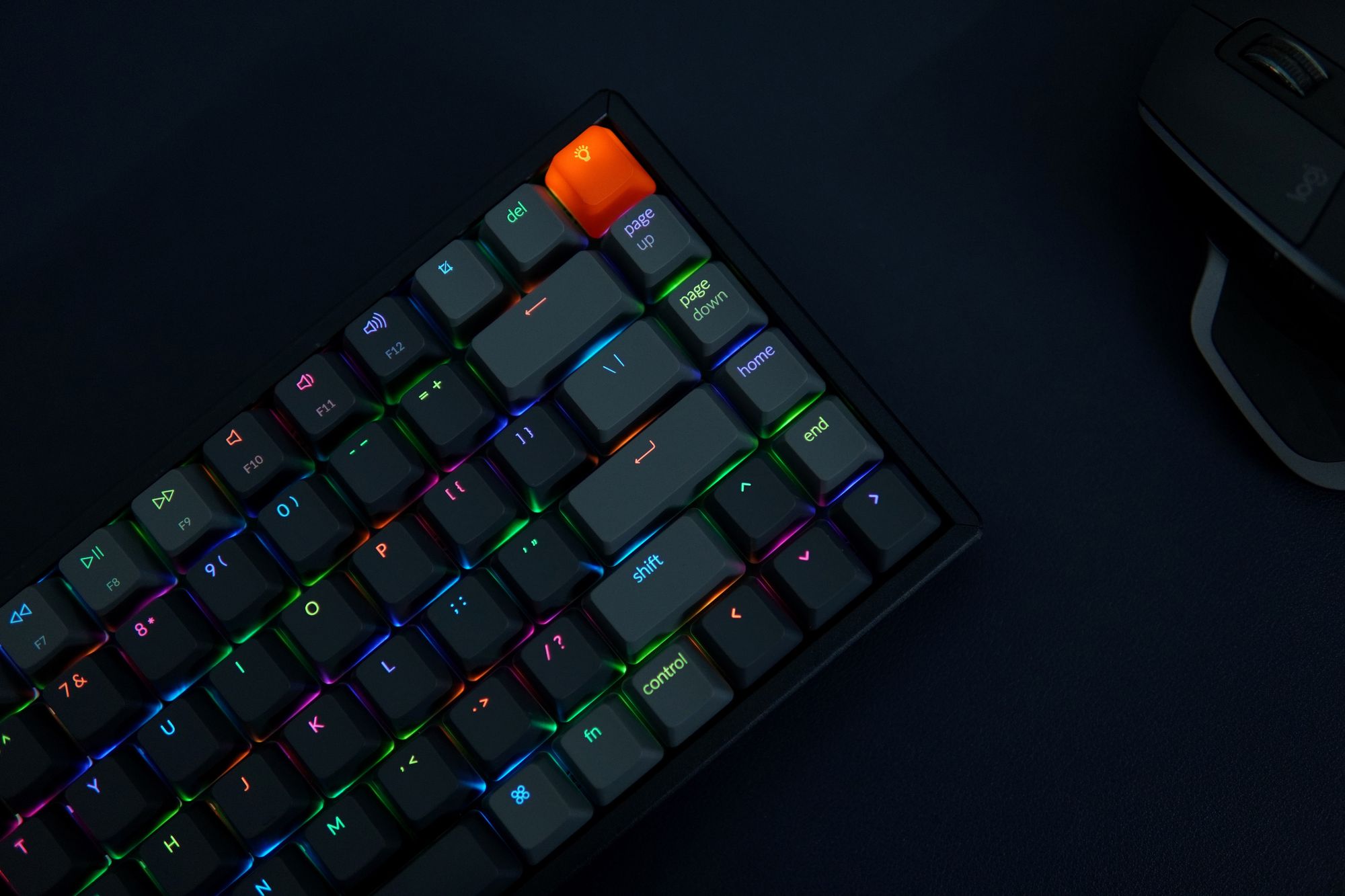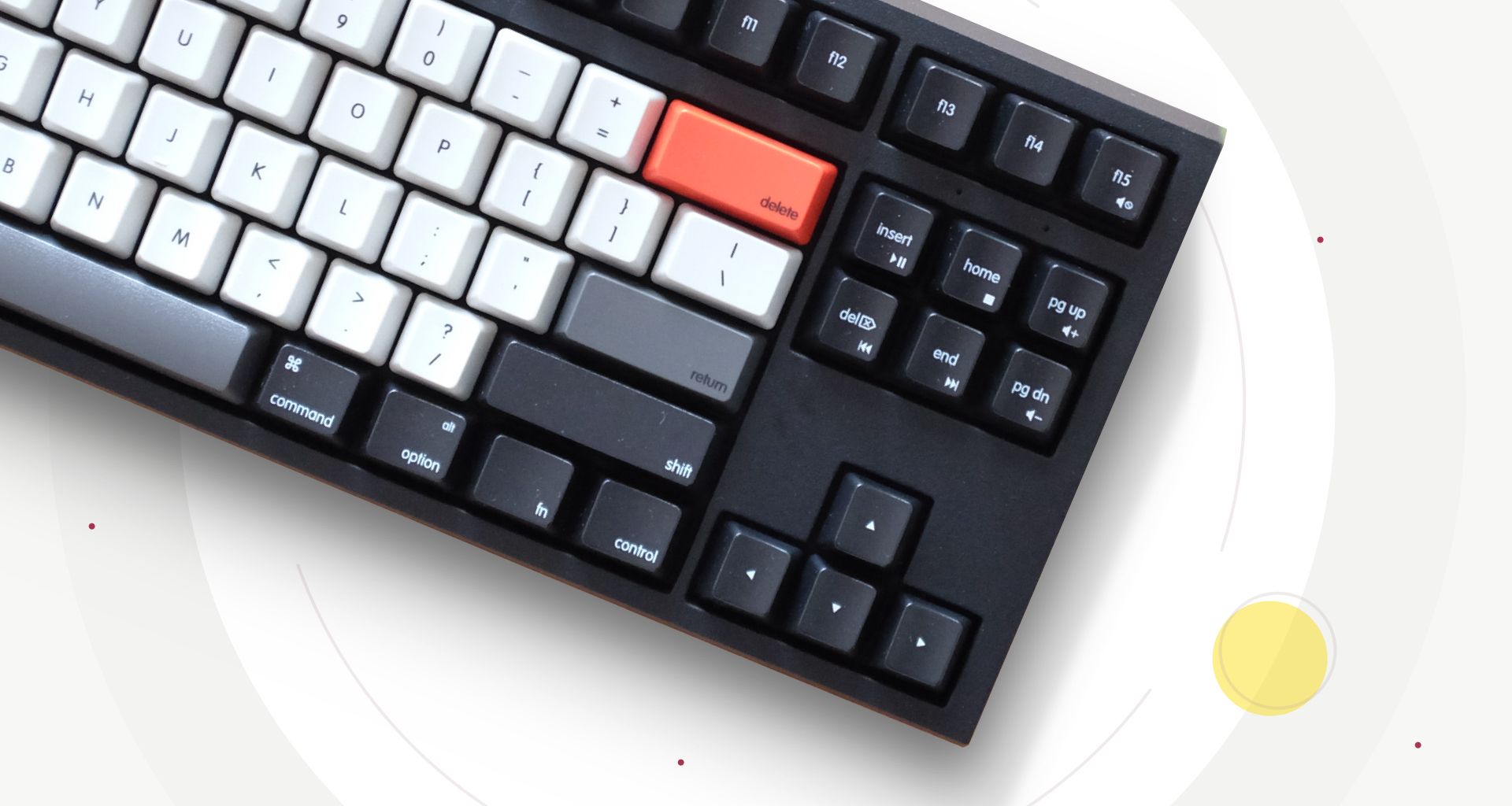Do writers need a particular, a more capable, a mechanical keyboard? William set off to the remote realms of the internet to figure it out. Luckily, he found his way back to share his findings with you.
Watching YouTube clips of anonymous hands randomly typing on keyboards, with audio designed to emphasize the sound, followed by commentary about its quality (clack or thonk?) is not something I ever thought I would be doing at 1 a.m.
I had finished a few research projects and decided it was time to reorganize my desk for paper and pen. I would need, of course, a minimized computer space for Ulysses and internet, along with an external keyboard, and while I was browsing eBay for a replacement for my defunct Apple, I came across some gaming keyboards, the kind with mechanical switches, and I remembered a few random experiences I had years back with that style of board.
Mechanical keyboards — the loud ones with the chunky plastic keys — somehow my hands could just flow over them. I never had to remind myself where home-position was, my fingers never slipped off the keys, my WPM count became suddenly respectable.
Maybe that’s what I should do. I’ll check it out. Famous last words.

Everybody knows what it’s like to research a hobby on the internet, that half-dazed, head-achy feeling, but mech boards introduce you to a whole other level. This became a real dive into the vaporwave, a corner of the internet occupied by only the truest of nerds where new microprocessors are announced and purchased years before they exist, and in terms of DIY computer gear, everything is possible, eventually. A strange place for a writer to find herself, no doubt.
The hunt for your best option quickly begins to resemble a game. You stumble into a few websites and begin to see how much is possible with a mechanical keyboard. As you bounce from website to website, you reflexively start designing your new board in your mind. And then you realize everything you’ve been looking at is either out of stock or in a “group buy”, months if not years in the future.
Attempt failed. The internet is laughing at you.
When you start the game again, you are faced with a series of choices. Should you buy a pre-built keyboard or a DIY kit? Conserve money with a cheap one, or invest? Do you really want to do more research, or should you just rely on an outlet to curate for you? What features do you need? And by the way, everything you’re looking at is virtual, so how are you supposed to know what type of key switch you prefer?
Questions divide into subquestions. A couple of hours pass, and you’re only getting more confused.
If you’re like me, it’s the idea you can’t quite shake. You step away, you clear your browser history, but in a couple of days, there you are again ogling a great design. You need to make a decision, but something about this market is mocking the expectation that such a thing as a decision is even possible.
There is definitely a question of credibility at play here, but it’s not about the keyboards themselves, which are awesome (and totally exist), it’s about you, specifically, the non-nerd, the un-initiated, tech-oblivious writer.
But, you may protest, doesn’t it make sense for writers to be interested in good keyboards? It seems pretty straightforward. Mechanical keyboards can be customized, adding a bit of comfort for those long hours in front of the screen, they offer a more pleasant and responsive typing experience, and many of them provide a hardware platform that allows for a different level of control of your workflow.
While that may be true, it will be up to you to decide what the best writer’s keyboard looks like. And they can dazzle.
For the truly dedicated, the light at the end of the tunnel is called an “endgame” board.

A Vapor World
It’s buried somewhere inside here, maybe in multiple places across the web, a holy grail, potentially your very own piece of perfection.
Take a look, for example, at NovelKeys.com. You’ll find plenty of eye candy on their website but almost zero inventory. That is commonplace in this world. It’s vaporware, a market that emerged from loosely affiliated groups of enthusiasts who scoured the planet for parts and posted builds and mods on Usenet forums in a time before most people knew the internet existed.
These groups kept mechanical keyboards alive when they were being phased out by the major computer manufacturers. And for the most part, the communities have continued to flourish in the same chaotic, proto-crowd-funding fashion as the internet has become more commonplace.
So be aware from the start that the cool kids don’t bother much with making sure you can tell the difference between what’s in stock, what’s part of a group buy, or what’s already sold out. Product lines are in a constant state of flux between funding, manufacturing and distributing. The further you go toward your endgame board, the more likely you are to find yourself in a group-buy for that perfect set of keycaps.
At that point, everything slips. By the time you get what you ordered, your wishlist may have already changed.
Mech Board Basics
But this is also where your creativity gets involved. When you learn how to look through sliding windows, and start to visualize a board that would work for you.
Are you looking for something small that you can easily shuffle out of the way or toss in a backpack; or do you need a control center for a monster computer setup running two or three monitors? The difference is a matter of form factor.
Form factor is categorized on a scale based on the included keysets. A full-size keyboard has separate keys for all the common ones: alphanumeric, number pad, function keys, navigation keys, and modifier keys.
From there, it scales down in percentages based, not really on the exact number of keys, but on the keysets that have been excluded. On smaller keyboards, you can still access the missing keys using layers (basically extra shift keys).
There are also unconventional form factors. Ortholinear layouts discard the staggered structure of normal keyboards in favor of an in-line grid structure, which is supposedly more ergonomic. You might also run across some split keyboards and even arched or bowl-shaped keyboards.
Another important consideration is programmability. If being able to customize key layouts and write macros sounds useful to your workflow, then definitely make sure your keyboard has an onboard processor, and check out the software the manufacturer provides for “flashing” the keyboard with your customized firmware.
That brings us to keycaps; it’s the part you actually touch that (usually) has the letters and numbers printed on top.

These come in two major types based on the kind of plastic used to make them. ABS keys are easier to manufacture, and the plastic lends itself to a wider range of colorways, but they are less durable and prone to that shiny worn look you might recognize.
PBT keys are made from thicker, more durable plastic and have a solid (or rigid) feel and a more consistent texture.
When browsing, keep in mind that you’ll need to make sure your keycap sets match the layout of your board.
Finally, there are key switches, the small, cubicle mechanisms that transform keystrokes into electric current. Cherry MX switches have been around since the pre-internet era, and they are still the most common because they are inexpensive, reliable, and fast. Gamers have been using them to gain a competitive edge for a few decades now.
In recent years, other manufacturers have cloned the MX profile and made refinements on the mechanism using different materials, making them sound “better”, or type more smoothly.

Switches are generally characterized as either linear or tactile, and either loud or silent. If you’re going to be using your keyboard in an office or a coffee shop where the constant prattle of a keyboard might annoy your neighbors, definitely go for something labeled “silent”.
Feel is harder to pin down. Whether smooth or tactile is better is entirely subjective, and you won’t really be able to tell what you like or dislike without actually typing on them.
Not that the internet won’t try to help out with that. In addition to the constant stream of YouTube reviews and the existence of actual key switch test kits, there is something called a “force curve”, a graphical representation of the resistance in the travel of a given key switch.
Try to ignore. The best strategy for your first mech board (if you go the hot-swappable route) is to make your best guess with some fairly inexpensive Cherry MXs and plan for an upgrade once you have a sense of your preference.
Some Practical Options
If experimenting with different key switches doesn’t sound like your thing, you can probably get by with a little less effort and expense.
Let’s call this the “pre-built class.” Some contenders are the lauded Anne Pro 2, Keychron K3, and several models from Ducky, including The One 2, and the Mecha SF.
These keyboards are reasonably priced and offer many of the sought-after features found on their vaporware counterparts, including programmability (in the Duckys and the Anne Pro 2, although not in the Keychron K3), backlighting, and Bluetooth connectivity.

The caveat with this bunch is that they aren’t really customizable. Ducky is great at producing beautiful designs, but most of them aren’t hot-swappable, and they don’t really lend themselves to changing out keycaps. You kind of have to go with the Ducky design once you have it. Similarly, the K3 from Keychron can be hot-swappable, but it isn’t programmable, and there aren’t many colors to choose from. A popular option in this range from the enthusiast community is the (not hot-swappable) Tofu offered by KBDfans, which is programmable and has several ready-to-ship color options.
For the full range of options, you’ll have to dig deeper and consider a DIY kit. Some beginner-friendly offerings include the GK64, the Ctrl by Drop, and the GMMK from Glorious Gaming.
Questioning the Interface
Too much information? Trust me, it’s only the beginning.
The bottom line is that mechanical keyboards open up a new terrain in the digital workflow. Maybe “new” isn’t the right word — it’s an area we tend to forget about as manufacturers focus on streamlined designs and negligible interfaces. Mechanical keyboards buck this trend in favor of expanding what you can actually do with a keyboard, from creating a custom look and feel to programming key layouts and macros. Sending a Ulysses sheet to your blog, for instance, could be accomplished in a single keystroke with the right macro.
All of this, potentially, is great for a writing workflow, and compared to the flat, slippery keys of a MacBook Air, a good set of mechanical keys feels like you’re typing on clouds. But while the mech board market is a vibrant culture growing substantially from year to year, it is still a counter-culture that rubs against the trends of commercial technology. As a result, diving in certainly has some hazards. Hopefully, this guide will help you avoid some pitfallsand get you started down a path toward mapping out a strategy that will improve your workflow.
